- Home
- M G Vassanji
And Home Was Kariakoo Page 3
And Home Was Kariakoo Read online
Page 3
Some years ago, in response to a government dictat, the two-storey buildings in Gaam began growing more floors, sprouting into colourful six- to eight-storey structures, dwarfing their neighbours, but without a thought to zoning, safety, history, or aesthetics. The official ambition was to makeover Dar into New York. In the process, Dar’s distinctive Indian and colonial architecture—the grilled wooden balconies, sloping roofs, arched verandas, and carved facades—slowly bites the dust. Every residue of the old Dar awaits helplessly the wrecking crew. But it is not the Asians who are objecting; few would care about architectural niceties. It is actually a few Asian developers in collaboration with corrupt bureaucrats and politicians who are responsible for erasing the former, gentler face of the city. There is some irony in that what property the government once took away in the name of socialism, with much gusto and racist applause, it is now selling back, to be defaced, deformed, or torn down and rebuilt in the name of the free market.
Gaam in its heyday, for seventy years, was the heart of Dar behind the seashore and the harbour; it reached out to the new suburb of Upanga and the expatriate strongholds of Oyster Bay and Msasani; it opened to the African areas of Kariakoo and beyond, and the industrial area of Pugu Road. Twice during the year, for three days, the Mnazi Mmoja ground would resound with the festive drumbeats of Eid. But during socialism, and especially after the Uganda war, Gaam had become a gloomy, flyblown place in the sun, bereft of its former joie de vivre. Those who had built it had departed, and business was in the dumps; landmark shops and restaurants had closed and there were food shortages. The streets were potholed and garbage was not picked up. To complete its demise, city planners had turned it into an Indian ghetto by closing off the two key arteries leading in and out of it.
But now Gaam is back. The new high-rises are attracting people and businesses; there are new hotels, mosques, and temples. And there is not only the KT to go and have your chai at, but also the AT and Qayyum’s and Blue Room, within a block or two of each other, all sticking to the same formula: the same kababs, bhajias, samosas. No one’s going to change the recipe and survive. Packets of biriyani and pilau are taken away by nonvegetarian residents during weekends. And Purnima, the vegetarian haven which sank into oblivion during the doldrums, is revived with crisp bhajias and the freshest chevdo. On Sunday mornings the new cake shop nearby fries jelebies on the sidewalk.
This is the capitalist revenge of Gaam. It is back and it does not need Oyster Bay. But the revival comes at a cost. Motor vehicles choke every street, SUVs being the preferred mode of transport. Every middle-class household boasts one or two or three vehicles, parked on the broken sidewalks, backsides poking out dangerously into the streets. In the evenings, when once people sat around to chat and children ran around playing, not only the sidewalks but also the streets are spread with parked cars—sleek, metallic ghosts in the dark, obstacles even to a simple solitary stroll.
Traffic jams, says a senior politician, are a sign of development. We are now like America. And he does not mean to sound ironic.
There are now essentially two Dars, connected by Selander Bridge. The other side is where only Europeans and a handful of the wealthiest Asians used to live. It was a beautiful dreamland to the rest of us. As children we went there only when a rich visiting relative took us for a drive past the grand houses. Oyster Bay, past the lighthouse, overlooking the Indian Ocean, was the place to go and sit in silence and feel a shiver while staring at the dark sea and the sky and hear the pounding waves; there would be the occasional European (that is, white) couple in their car, necking and doing whatnot, the car rocking as though possessed by a spirit, which in a sense it was. Oyster Bay today still has the beautiful houses; it has added the poshest hotels and restaurants in the city, and shopping malls and new developments for the foreigners and the wealthy. There are those who know only this Dar, who would not find their way around Gaam or Kariakoo. On the other hand, I who sometimes put up at Oyster Bay, don’t feel I am in Dar unless I breathe the dust of Gaam. But the vicious bottleneck of the bridge can take two hours to cross at rush hour, and there is a growing tendency among people to move into the new residences of the old city. Yes, finally the revenge of Gaam.
Walter Bgoya, who benefitted from the confiscation of Asian buildings, is one of those who throws up his hands in despair at the blight that is the new, ugly reconstruction of the old city, its ruthless defacement. He’s had a court order brought to prevent the wrecking of a historical building opposite the harbour. And his company has come out with an illustrated book showing Gaam’s distinguished buildings: those already destroyed and those with the axe looming over their heads. Now they’re preserved in print. But his is a rare sensibility. He has seen better fortunes recently, perhaps with a government or foreign benefactor, and having realized too the wisdom of publishing in English. The old idealist, publishing titles that would make a university press proud elsewhere, now owns a new, modern office in the industrial section of town and a storefront on Samora Avenue, hoping this part of the old town will revive and that people will flock to attend literary events and buy books. The avenue—called Unter den Akazien in German times, later Acacia Avenue, and later still Independence Avenue—was a promenade lined with acacia trees and fancy shops that displayed in their windows imported items such as shirts from England and tennis rackets and golf clubs and accordions and guitars; on Saturdays some of us would play truant from high school and come here to drink iced cappuccinos, recently in fashion, the Italians having arrived, and watch the girls. Now the shops sell anything from cheap ready-made clothes to cell phones, and in front of them, where once the flame trees were ablaze in their fiery red glory, the road is crowded with desperate-looking vendors selling anything from newspapers to worn-out books fifty years old, from peanuts to T-shirts with football logos from all the major teams of the world.
The shelves of Bgoya’s bookstore have fattened recently, the titles are fascinating. I can recall the dusty wooden skeletons of only a few years ago. Where else would one see Soyinka’s take on the new Africa, so abundantly displayed? Or a study of Ebrahim Hussein, the nation’s iconic modern playwright, who suddenly went silent? Or the full set of the gritty urban novels of the Kenyan Meja Mwangi? A history of Dar es Salaam, a dictionary of Nyakyusa? Until recently only expatriates bought books; but now there is an elite, however thin the crust, and it has the money to buy books. But what are the James Hadley Chases doing here, 1960s-era pulp thrillers long out of date elsewhere, prominently on display? Walter Bgoya grins mischievously. The best sellers are the Bibles, he confesses. And then come the Chases. You have to draw the customers in before they go for Ebrahim Hussein, Issa Shivji, and Shaaban Robert. What about Qurans? No, the attendants are women and they don’t know if they’ll get into trouble handling the Muslim holy book.
One morning with a local friend I undertake a walk along my old streets. We depart from Mövenpick, where in its lobby café foreign-aid workers interview their local agents, who sit humbly before them like pupils before a principal, and where an espresso costs half the minimum daily wage, and head off to Jamhuri Street—Ringstrasse in German times, and later Ring Street. It used to have two cinema houses, the Odeon showing Bollywood and the Cameo showing Italian fare, a typical one of which had Hercules and Ulysses romping together bare-chested on the green hills where pretty young women in silk gowns played blindman’s buff, and enemies and dragons lurked.
On the other side of Jamhuri Street, across the new highway that squeezes this venerable old ring road forever into the Indian quarter, is the Mnazi Mmoja ground. This open space was created by the colonial authorities as a cordon sanitaire separating the Asian Gaam from the African Kariakoo. But many Asians lived in Kariakoo, above or behind their small shops. Eid was celebrated with a frenzy on Mnazi Mmoja, to which people thronged in the hundreds. There were the local fast foods at every spot, the bands, the dancers and men on stilts, the merry-go-round, and gambling stalls. At night, oil lamps flick
ered in the dark, woodsmoke choked the air, shadows flitted about like jinns, and the sound of the ngoma drumbeats echoed far and wide into the suburbs. Sleepless in our beds only three blocks away, my brothers and I pined to be there “at the Eid.” But tomorrow was school.
We walk along Uhuru Street, which begins near the customs house and goes down past the city-status tower and Mnazi Mmoja all the way into Msimbazi Street in Kariakoo. The street looks narrower than it did in my childhood, naturally. It is choked with traffic and fumes, and you push past crowds to walk on the sidewalk. Instead of the old green and beige Leyland city buses, the groan and grunt of its gears announcing the hour of dawn like a broken clock unable to chime but grinding away all the same, there are now the packed minibuses called dala-dala. They were introduced in the 1990s when government controls on businesses were completely relaxed; dala is “dollar,” which had also arrived, it being forbidden to possess in the old days of socialism. A dollar or its equivalent was what the minibuses used to charge when they first came on the scene. A dollar was seven shillings when I first left; it’s now sixteen hundred.
The corner of Uhuru and Sikukuu, where we lived two floors above, stands intact, awaiting the inevitable wreckers and cranes. It’s uncanny. As I stand here in the noisy clamorous heat and dust taking photos, I think I could fill all the apartments around this crossroads with people and stories. No amount of photography could replace the memories of a life lived, of lives observed and known, of lives elaborated in the mind and on the page. Across from us a man nicknamed Toti had his shop; fat and sickly and miserly, always in singlet and loincloth, he had to be supported upstairs to his flat. He sold everything a modest African household would need day to day: grains, spices, matches, kerosene, cooking oil. I would be sent to Toti to buy bundles of used newspapers, which my mother used in her shop for wrapping. Where did Toti, sitting in his shop all day, get them from? They were all British papers, which I would pore over, reading news of child murders and football (Jimmy Greaves returning to Tottenham from Milan), and the comics (Andy Capp and Sooty). The Totis had the only telephone on the block, and the only car, a Ford Taunus stationwagon. With great reluctance my mother would pay 15 shillings a month, whenever she could spare them, to have me brought home from school with their son, a year older than I. Next door to us was a fair, chubby, and boisterous woman called Roshan Godoro, who sold mattresses and was rumoured to be having an affair with a police inspector who often came around. Across the street was a Goan family, whose older daughter was a seamstress and whose father drank a lot; when the British jet plane, the Comet 4, was introduced with much fanfare and arrived in Dar (“Good night, Dar! Good morning, London!”), the son took my sisters to the airport to have a look; they returned with the plane’s plastic cutlery as mementos. And every once in a while the community town crier came limping along, stood at this crossroads, and announced a funeral or a special message from the Ismaili Imam. And once—the memory persists—here I was hit by a bicycle when returning with a loaf of bread from the bakery.
We walk into Congo Street, the open-air clothing market denser than ever and running for several blocks; my companion promised me a sight of Chinese vendors—still a novelty worth pointing out—in the area, but we don’t find any. From here to Msimbazi, then back up to the vegetable market, which used to be open-air but is now—thanks to some foreign donor—all indoors. To the street it presents the grim permanence of a vast concrete bunker. Finally my companion and I go back up to Gaam.
We head towards Kumbhad wadi, the area of the potters. In the nineteenth century, I was told by a dhow owner in Gujarat, the Kumbhads (potters) would sometimes simply put their wares on a raft and let the trade winds carry them across to the African coast. In due time the reverse winds returned them home. The Kumbhad wadi used to be a very modest settlement, a village transposed from India. In the afternoons the Kumbhads would take to the streets, pulling their carts of clay pots and pans to sell, calling out, “Taawdi matli! Taawdi matli!” Now the area has three apartment buildings, and is still set off with a gate and a guard. Inside there is a temple and a playground.
(Photo Caption 3.1)
Finally that afternoon, we stop to gaze at the site where one of those newfangled high-rises simply collapsed, leaving two people dead; not far from here is another tall building which, on its way to toppling sideways, has found support from a two-storey stalwart of yesteryear. The past upholding the present. This leaning tower of Dar es Salaam has people still living in it.
More recently, another building collapsed in the area while still under construction; this time more than forty people were killed and the incident made world news. The president and other politicians all came to have a look, and like Captain Renault in Casablanca, they all expressed their shock.
4.
The Road to Tanga
THE NAIROBI TO MOSHI BUS left early in the morning and made its lonely way south through the plains. I had been instructed by my hosts to decline in case a fellow passenger offered me a candy, because it was likely to be drugged, in which case I would be robbed and lose my luggage. It was the early 1990s and such was the fear for personal safety then. But my neighbour, a young Masai or Meru who was headed with goods for his father’s shop in Arusha, seemed nice and I could hardly refuse the sweets he pressed upon me. Eating sweets seemed to be a common practice in the buses. It was an irritating and anxious journey initially, with frequent police checkpoints on the Kenya side. A grim-faced copper or two would step up and peer inside the silenced bus. If they felt like it these surly guardians of the law could search all the passengers, or even have the luggage brought down from the roof one piece at a time. At each checkpoint however they received their baksheesh. Once I heard the driver instruct the conductor, “Give him a pair of pants”; this was done, and we went speeding on our way. It was only when we had crossed the border into Tanzania, Kilimanjaro rising ahead of us in the distance, that the mood inside relaxed, the passengers became chatty. We arrived in Moshi in the middle of the afternoon.
The Khoja Asians used to have guest houses in many of the towns in East Africa; I had stayed in them in Dar and in Mombasa. They were clean and cheap, though often rooms had to be shared, but among familiars you didn’t feel lonely in a strange town and there was plenty of free advice. I had been told there was a guest house in Moshi where I could spend the night, and also in Tanga, which was my destination. I got off at Moshi and took a taxi to the guest house, only to discover that due to the recent population depletions of Asians all over the country, it had been shut down. I had to look for another place to stay.
One of my fellow passengers was a young man called Pinto from Nairobi, a tour operator who had come from India only two years before. We found a hotel together and afterwards as we walked around were approached and befriended by a young Asian taxi driver called Dilip who took us to his home. The family was very modest, consisting of our friend, his young brother, and their parents. The father’s leg had been amputated after a car accident, and the older boy was the bread-earner. I wondered why they took us in—perhaps they expected taxi fares from us, perhaps they were simply lonely. Driving a taxi was not an Indian trade. Only later I concluded that they must be from one of the so-called lower castes, who had recently left their traditional occupations. When the old man lost his “company” job following his accident, he had to give up the flat that went with it, and the family was forced to spend six months in the temple. After dinner and listening to incessant complaints from the old man about the state of the country—the general neglect (the refrigeration at the morgue was broken, for one thing, and there was a stench in the town), the rising cost of living, the shortages—Pinto and I went back to our hotel, which was above a noisy bar. It was the Hindu Navratri season, and during the night as the bar became quiet downstairs, I could hear strains of song from the temple.
Moshi, and its sister town Arusha, an hour away, always had an English-village feel to them, at least to those of us visiti
ng from chaotic Dar. They were compact and neat, with tree-lined avenues and bungalows for houses; the weather was cool and the surrounding countryside lush and hilly. Moshi was the smaller town, with a set of streets named First Street, Second Street, and so on, giving it added distinction. But the wonderful thing about Moshi was Kilimanjaro, seen from the main street looming majestically over the town, the smooth, round, snowy peak clear in the pristine morning air, then gradually donning a veil of cloud as the day wore on. Elsewhere they talk incessantly about the weather, in Moshi they asked if there was a cloud cover yet on the mlima. This mighty mountain with its gentle contour remains the most awesome and yet heart-warming sight—even though I am not from the area—casting its benign gaze over the entire country. The story goes that originally—in the early days of colonization—it was part of British Kenya, but Queen Victoria presented it to her grandson Kaiser Wilhelm II of Germany (which had colonized Tanganyika) for his birthday, and the straight border between the two countries acquired its familiar bend in order to accommodate the change. At the nation’s independence, Brigadier Sarakikya of the Tanganyika Rifles planted the national flag on its peak, a momentous occasion symbolizing freedom, hope, ambition—an event that was commemorated on the highestdenomination postage stamp.
Our friend from the previous day, Dilip, took us around. There appeared to be a subculture of drifters and expats in Moshi—consisting of hotel managers, tour operators, and others—that he took pleasure in showing off to us. The Asian section of town consisted of pleasant-looking, flat-roofed bungalows and townhouses built in the early 1960s. There was an older area that was eerily quiet, perhaps because there were no vendors or children in sight; the trees were ancient, and the bungalows staid, with high tiled or iron roofs. This would have been the old European area. Here we came upon a monument to “Hindu, Sikh, and Mohamedan” soldiers of the First World War. Close by, in a tidy compound enclosed by a white picket fence, was a rather extensive war cemetery where I walked around while the others waited with complete disinterest. The dead young men buried here wholesale in neat rows were all fully identified; many had been killed during the period March through May 1916. The cemetery was cared for by a British veterans’ organization.

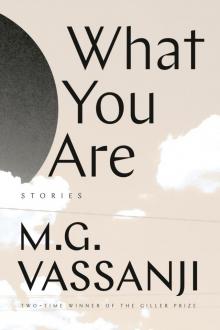 What You Are
What You Are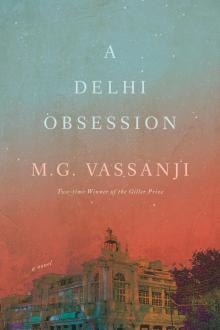 A Delhi Obsession
A Delhi Obsession When She Was Queen
When She Was Queen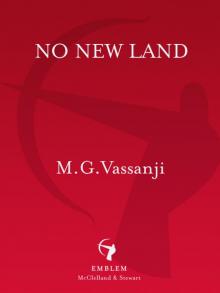 No New Land
No New Land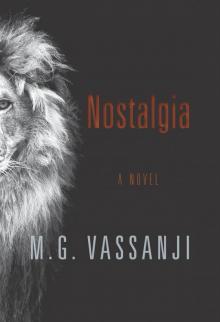 Nostalgia
Nostalgia Mordecai Richler
Mordecai Richler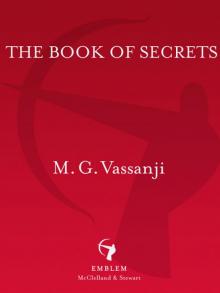 The Book of Secrets
The Book of Secrets Amriika
Amriika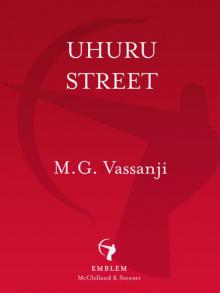 Uhuru Street
Uhuru Street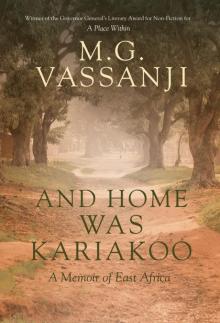 And Home Was Kariakoo
And Home Was Kariakoo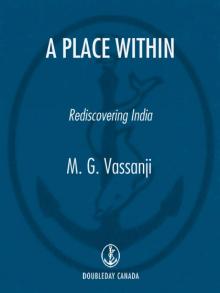 A Place Within
A Place Within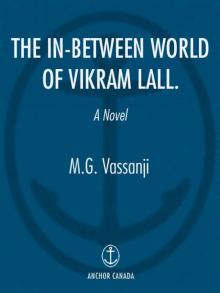 The In-Between World of Vikram Lall
The In-Between World of Vikram Lall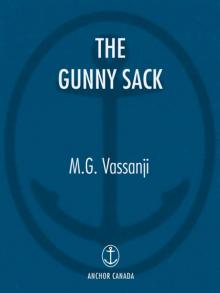 The Gunny Sack
The Gunny Sack